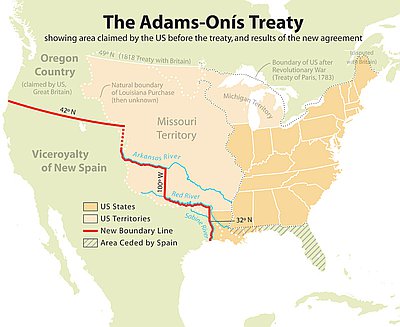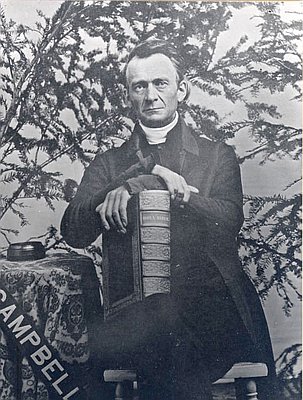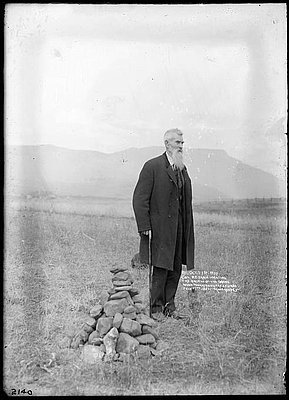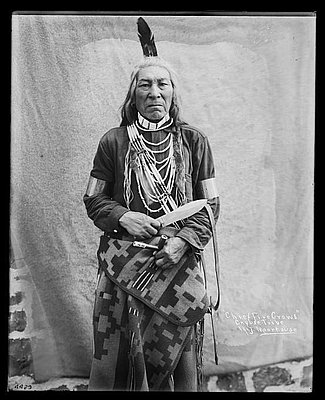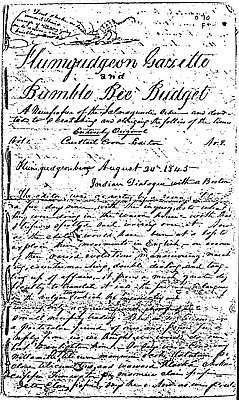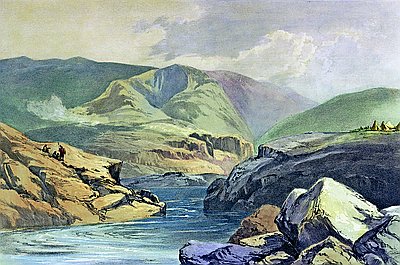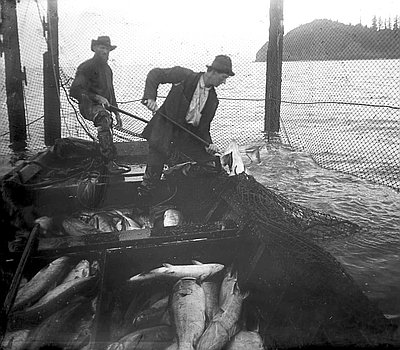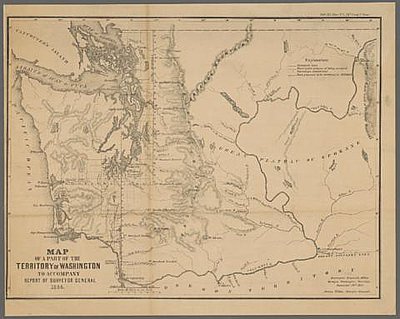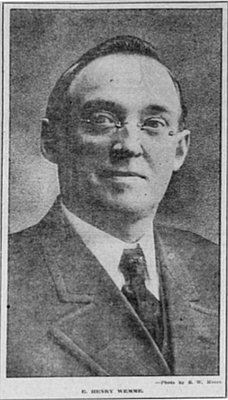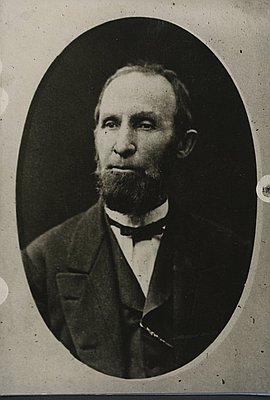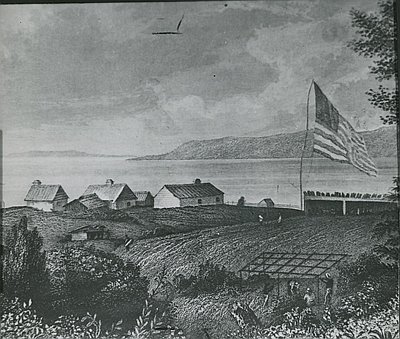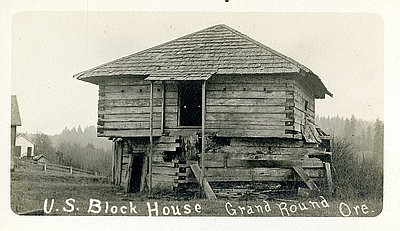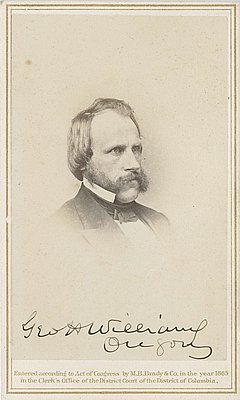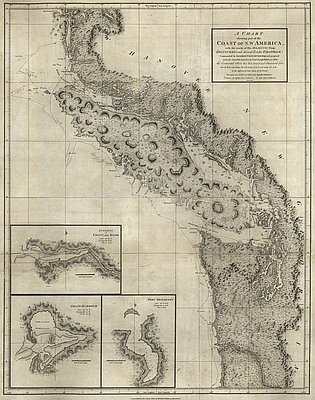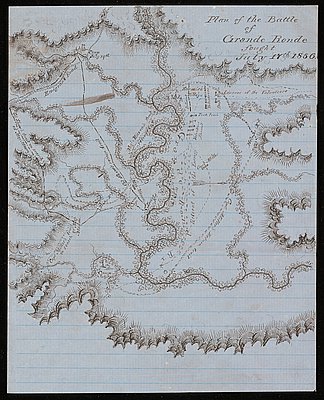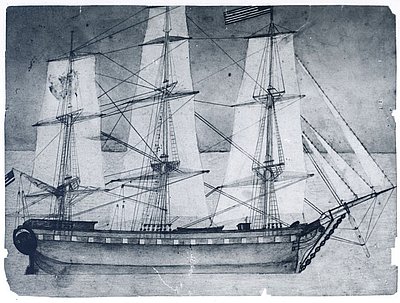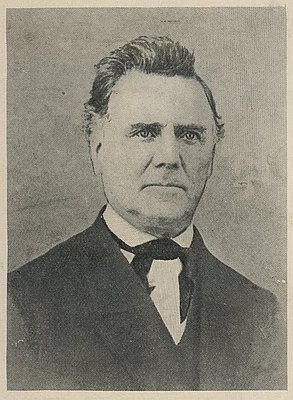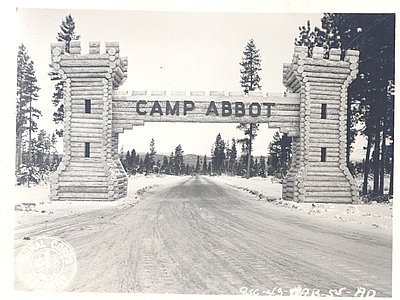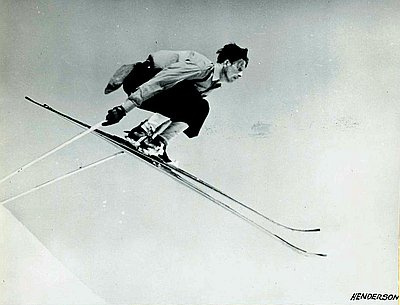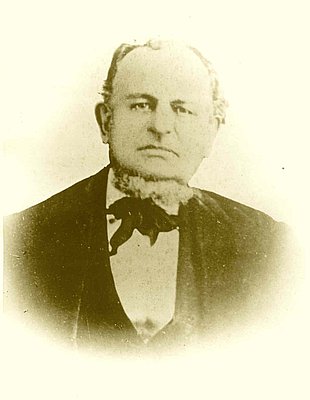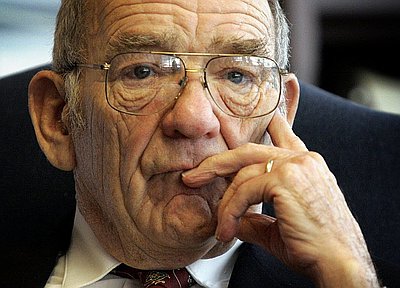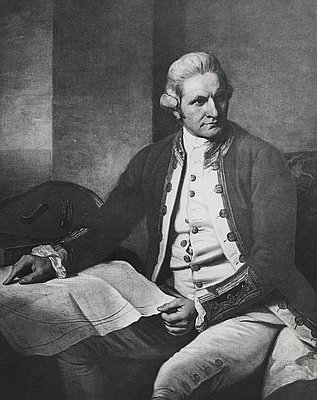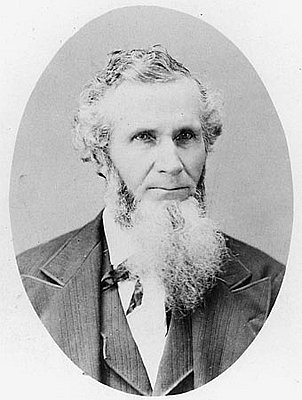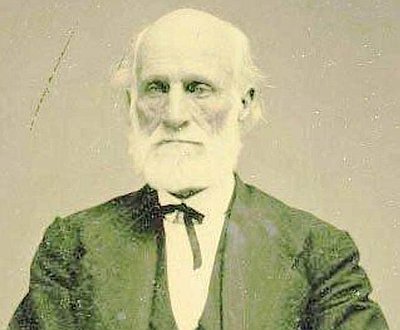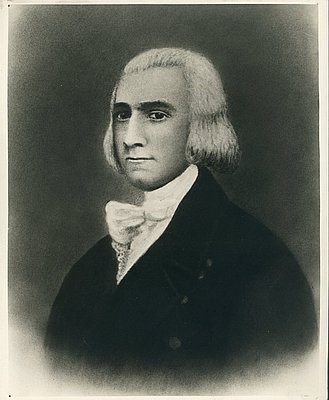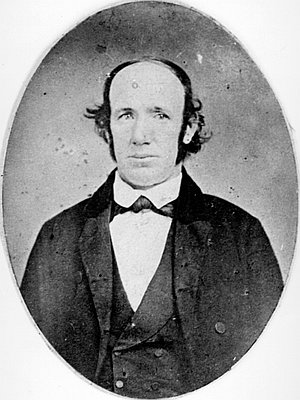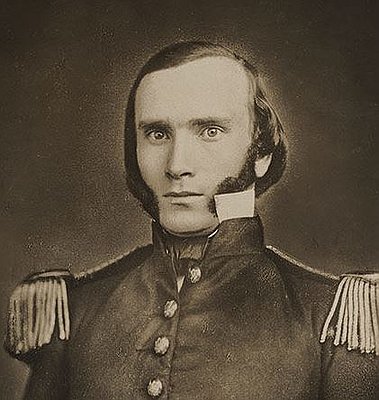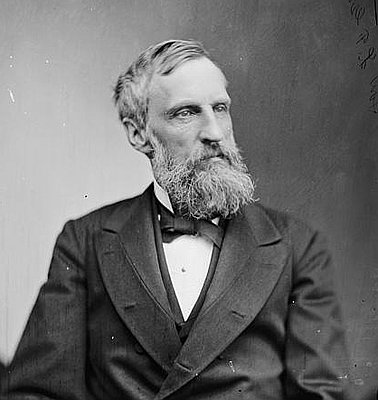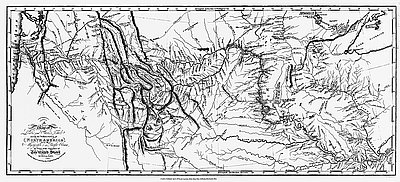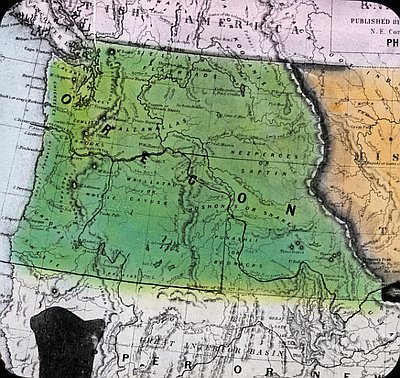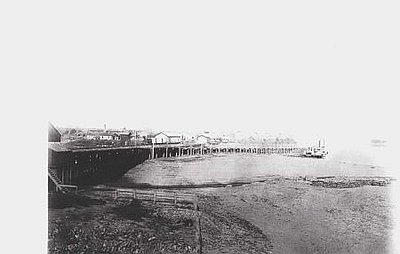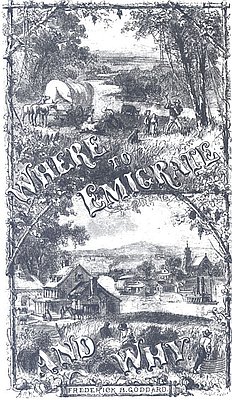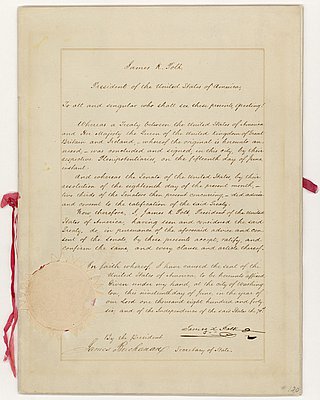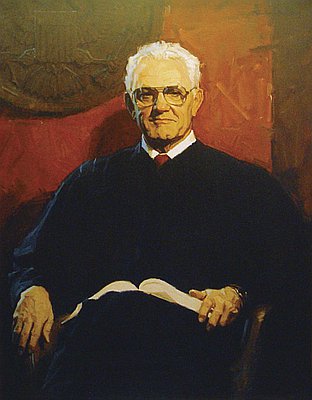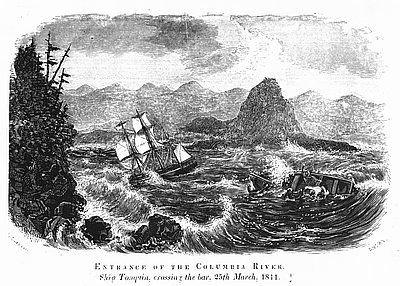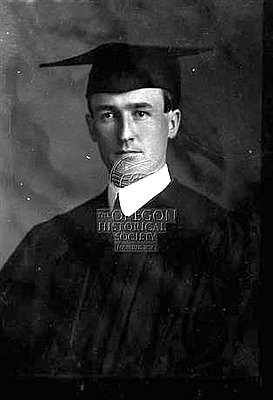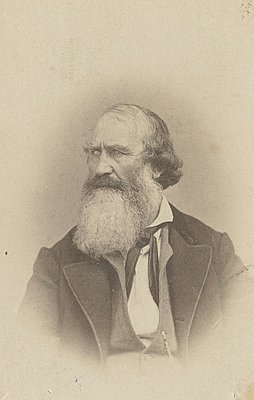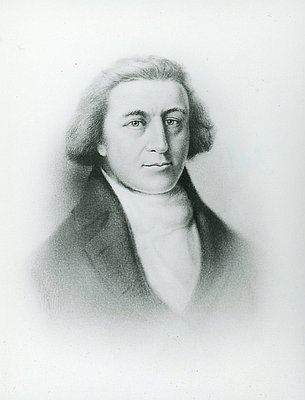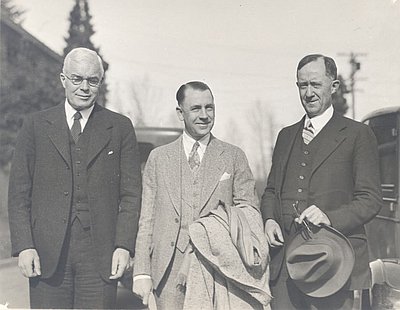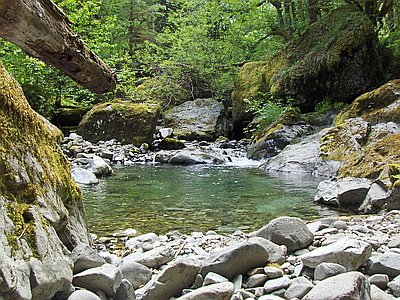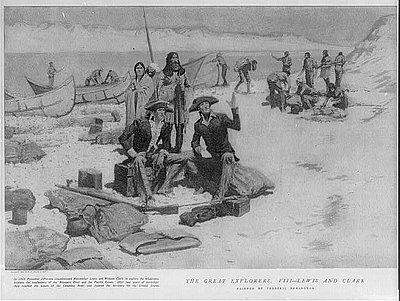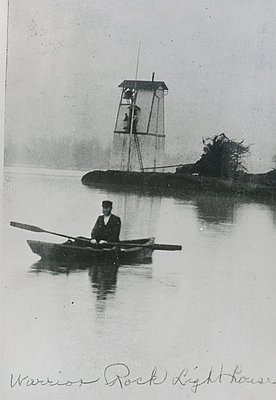William L. Lang
William L. Lang is emeritus professor of history at Portland State University and the founding director of the Center for Columbia River History. The founding editor of the Oregon Encyclopedia, he now serves on the OE Editorial Board and chairs the Executive Committee. He is the author and editor of many books and articles on the history of the Columbia River, the Pacific Northwest, and the Northern Plains, including Montana: A History of Two Centuries (1991), Great River of the West (1999), Two Centuries of Lewis and Clark (2004), and Explorers of the Maritime Pacific Northwest (2016).
Author's Entries
-
![Adams-Onís Treaty (1819)]()
Adams-Onís Treaty (1819)
The oldest political terrestrial state boundary of Oregon—the southern state line with California—was set in 1819, four decades before statehood and without clear United States title to lands owned by Native tribes. The boundary line between Oregon and California was determined by the Adams-Onís Treaty, a diplomatic agreement between …
Oregon Encyclopedia
-
![Alvan Waller (1808-1872)]()
Alvan Waller (1808-1872)
In most histories of Oregon, Alvan Waller appears most prominently as the Methodist missionary who did personal battle with John McLoughlin and the Hudson’s Bay Company over contested land claims at Willamette Falls. If for no other reason than his contretemps with McLoughlin, Waller holds a conspicuous place in …
Oregon Encyclopedia
-
![Benjamin F. Shaw (1829-1908)]()
Benjamin F. Shaw (1829-1908)
During the 1850s, Benjamin Franklin Shaw served as an interpreter for Washington Territorial Governor Isaac Stevens at treaty councils with Native tribes in the Pacific Northwest. He participated in treaty negotiations in 1854 and 1855 in the Puget Sound region and later stood as a vocal defender of the U.S. …
Oregon Encyclopedia
-
![Cayuse Indian War (1847–1850)]()
Cayuse Indian War (1847–1850)
The first major and ongoing conflict between Native groups and white resettlers in Oregon was a direct consequence of the murders by Cayuse tribesmen of Marcus and Narcissa Whitman and eleven others at Waiiletpu, the Whitmans’ mission near present-day Walla Walla, Washington, on November 29, 1847. Usually called the Cayuse …
Oregon Encyclopedia
-
![Charles Edward Pickett (1820–1882)]()
Charles Edward Pickett (1820–1882)
Although Charles Pickett spent only thirty-three months in Oregon in the mid-1840s, he left a surprising mark. He is credited with creating the first newspaper published on the Pacific Coast, the Flumgudgeon Gazette and Bumble Bee Budget. He also served as secretary of Oregon’s first literary society and was …
Oregon Encyclopedia
-
![Columbia River]()
Columbia River
The River For more than ten millennia, the Columbia River has been the most important and intensively used part of Oregon’s natural landscape. The river’s main stem gathers water from ten principal tributaries that drain 259,000 square miles in seven U.S. states and one Canadian province. In Oregon, the largest tributaries are …
Oregon Encyclopedia
-
![Commercial Salmon Fishing in the Columbia River]()
Commercial Salmon Fishing in the Columbia River
Salmon fisheries have a long history in Oregon, going back to as many as 10,000 years—as long as salmon and humans have coexisted in the Columbia River watershed. Two archaeological sites of ancient fisheries, for example, one on the south-central northwest coast and the other on the northern Columbia Plateau, …
Oregon Encyclopedia
-
![Creation of Washington Territory, 1853]()
Creation of Washington Territory, 1853
On August 14, 1848, Congress created Oregon Territory, a vast stretch of western America that included all or portions of five present-day states, including Washington. Within less than a decade, though, Congress agreed to split the area by calving off a new territory—Washington. The creation of Washington Territory in 1853 …
Oregon Encyclopedia
-
![E. Henry Wemme (1861-1914)]()
E. Henry Wemme (1861-1914)
Ernest Henry Wemme is best known in Oregon history for being a successful businessman and philanthropist. He purchased the Barlow Road in 1912 and established a post office and community bearing his name near Welches and Brightwood on Mount Hood on present-day U.S. Highway 26. The owner of the first …
Oregon Encyclopedia
-
![Elijah White (1806-1879)]()
Elijah White (1806-1879)
Among early migrants to the Oregon Country from the United States, Elijah White was remarkable for his role in shaping Oregon’s political culture. As a physician at the Willamette Mission, he established an early medical service. He also was a subagent to Native tribes, led the first large overland …
Oregon Encyclopedia
-
![Fort George (Fort Astoria)]()
Fort George (Fort Astoria)
Fort George was the British name for Fort Astoria, the fur post established by the Pacific Fur Company in 1811 on the south bank of the Columbia River, seven miles from the river’s mouth. The fort was a mainstay in British fur trading activity on the lower Columbia River …
Oregon Encyclopedia
-
![Fort Yamhill Blockhouse]()
Fort Yamhill Blockhouse
The Fort Yamhill Blockhouse is one of the few architectural remnants from the era of wars and treaties with Native people in western Oregon, from 1849 to 1860. The U.S. Army constructed the building at Fort Yamhill, near present-day Valley Junction, in March-April 1856. In 1911, preservationists moved the structure …
Oregon Encyclopedia
-
![George H. Williams (1823–1910)]()
George H. Williams (1823–1910)
George H. Williams was a Democratic politician and officeholder in Oregon from the mid-1850s to the early twentieth century. He was chief justice of the territorial supreme court, a delegate to Oregon’s constitutional convention, U.S. senator from Oregon, the first Oregonian to serve in a presidential cabinet, a member of …
Oregon Encyclopedia
-
![George Vancouver (1757-1798)]()
George Vancouver (1757-1798)
The role George Vancouver played in Oregon history is tangential, yet it is foundational to the developments that radically changed the region during the early nineteenth century. In 1791-1795, Vancouver led the most thorough scientific maritime exploration of the Northwest Coast of North America, which included the creation and publication …
Oregon Encyclopedia
-
![Grande Ronde Massacre, 1856]()
Grande Ronde Massacre, 1856
On July 17, 1856, Washington Territory volunteer soldiers, under the command of Col. Benjamin F. Shaw, swept through a summer village of Walla Walla, Umatilla, and Cayuse families in the meadows along the Grande Ronde River near present-day Summerville and Elgin. The families, who had only a few armed …
Oregon Encyclopedia
-
![Great Reinforcement (1840)]()
Great Reinforcement (1840)
One of the signal immigrations to Oregon came by sea in 1840, years before wagons plied the Oregon Trail. Fifty-one men, women, and children took passage on the 600-ton, three-masted barkentine Lausanne, leaving New York harbor in October 1839, with Captain Josiah Spaulding at the helm. The migrants arrived …
Oregon Encyclopedia
-
![Gustavus Hines (1809-1873)]()
Gustavus Hines (1809-1873)
Gustavus Hines came to Oregon at age thirty as part of the Willamette Mission’s Great Reinforcement, which brought a hundred men, women, and children to the Methodist mission near present-day Salem. For over four decades, Hines devoted his life to furthering Methodism and establishing Methodist education in Oregon. He …
Oregon Encyclopedia
-
![Henry Larcom Abbot (1831-1927)]()
Henry Larcom Abbot (1831-1927)
Henry Larcom Abbot was a career military engineer who is memorialized on Oregon’s landscape in three places: Abbot Pass, just west of Clear Lake off U.S. Highway 26 north of Warm Springs; Abbot Creek, a western tributary to the Metolius River some twenty miles northwest of Sisters; and Camp Abbot …
Oregon Encyclopedia
-
![Hjalmar Hvam (1902-1996)]()
Hjalmar Hvam (1902-1996)
Skiing enthusiasts in Portland just before World War II knew the name Hjalmar Hvam as readily as most people recognize the names of professional athletes. Inducted into the National Ski Hall of Fame in 1967, Hvam was the dominant downhill and cross-country ski racer in the Pacific Northwest during the …
Oregon Encyclopedia
-
![Jacob S. Conser (1818-1893)]()
Jacob S. Conser (1818-1893)
In August 1933, state authorities unveiled a plaque at the dedication of a new Conde McCullough-designed bridge on State Highway 164, spanning the Santiam River at Jefferson. The plaque memorialized Jacob Conser, an 1848 Oregon Trail migrant who played a significant role in Marion County history during the 1850s. …
Oregon Encyclopedia
-
![James A. Redden (1929–2020)]()
James A. Redden (1929–2020)
James A. Redden served as a federal judge for Oregon from 1980 to 2011. His role in legal disputes and high-profile court cases over the federal government’s management of Columbia River dams was precedent-setting. Most significantly, he nearly singlehandedly created ongoing court oversight of federal agencies subject to the Endangered …
Oregon Encyclopedia
-
![James Cook (1728-1779)]()
James Cook (1728-1779)
In the lower right-hand corner of his magnificent Chart of the NW Coast of America and NE Coast of Asia explored in the Years 1778 & 1779, James Cook set down the first notations of the Oregon Coast on an accurate modern map. He created the map during his …
Oregon Encyclopedia
-
![Joel Palmer (1810–1881)]()
Joel Palmer (1810–1881)
Joel Palmer spent just over half of his life in Oregon. He first saw the Oregon Country from a wagon in 1845 and spent three decades participating in central events in Oregon’s political history. During those years, he was a government peace commissioner to the Cayuse, the Territorial Superintendent of …
Oregon Encyclopedia
-
![John Beeson (1803-1889)]()
John Beeson (1803-1889)
John Beeson had been in Oregon only three years, but his outrage at the treatment of Native Americans by whites led him to become a strident advocate for Indian rights. In May 1856, he had so angered a majority of whites in the Rogue River Valley by advocating for humanitarian …
Oregon Encyclopedia
-
![John Jacob Astor (1763-1848)]()
John Jacob Astor (1763-1848)
John Jacob Astor never visited Oregon or the Pacific Northwest, but his investment in the region’s fur trade in the early nineteenth century left an important legacy. In 1810, Astor sent two expeditions representing his Pacific Fur Company, one by sea and one by land, to establish a fur …
Oregon Encyclopedia
-
![John Minto (1822-1915)]()
John Minto (1822-1915)
John Minto described his sudden decision in 1844 to strike out for Oregon as a “species of madness,” an impetuous act that included little reflection and no timidity. He joined the R.W. Morrison family wagon group as a contract laborer, with an unbounded commitment to the cross-country trek and what …
Oregon Encyclopedia
-
![John Mullan (1830-1909)]()
John Mullan (1830-1909)
On old maps of the Pacific Northwest, John Mullan’s name is affixed to a 625-mile-long military wagon road that connected the heads of navigation on two of the West’s most important rivers, the Missouri and the Columbia, and the first road to link the Pacific Northwest with northern sections of …
Oregon Encyclopedia
-
![LaFayette Grover (1823-1911)]()
LaFayette Grover (1823-1911)
LaFayette Grover was politically one of the most successful Democrats in nineteenth-century Oregon and the only politician to win election to the U.S. House of Representatives, the U.S. Senate, and Oregon’s governorship. Elected to the Oregon Territorial legislature in 1853-1856, he served as Speaker of the House in his last …
Oregon Encyclopedia
-
![Lewis and Clark Expedition]()
Lewis and Clark Expedition
The Expedition No exploration of the Oregon Country has greater historical significance than the Voyage of Discovery led by Meriwether Lewis and William Clark. Historians and geographers judge the Lewis and Clark Expedition, which brought more than thirty overland travelers into the Columbia River Basin in 1805-1806, as the most …
Oregon Encyclopedia
-
![Meriwether Lewis (1774-1809)]()
Meriwether Lewis (1774-1809)
Reflecting on Meriwether Lewis after his death, Thomas Jefferson bemoaned the loss to “his country of one of her most valued citizens whose valour & intelligence would have been now imployed.” Lewis had taken his own life on October 11, 1809, along the Natchez Trace at Grinder’s Inn on his …
Oregon Encyclopedia
-
![Oregon Question]()
Oregon Question
“The Oregon boundary question,” historian Frederick Merk concluded, “was a diplomatic problem involving a kernel of reality and an enormous husk.” The eventual existence of the states of Oregon, Washington, Idaho, and Montana depended on solving the so-called Oregon Question, a three-decade dispute between Great Britain and the United States. …
Oregon Encyclopedia
-
![Oregon Steam Navigation Company]()
Oregon Steam Navigation Company
Among early business enterprises in Oregon, the Oregon Steam Navigation Company (OSN) stands out as uncommon on two counts. Quite against the dominant trend in the Pacific Northwest, OSN was funded by local investors who were determined to keep Portland’s interests uppermost. In addition, OSN effectively operated for two …
Oregon Encyclopedia
-
![Oregon Trail]()
Oregon Trail
Introduction In popular culture, the Oregon Trail is perhaps the most iconic subject in the larger history of Oregon. It adorns a recent Oregon highway license plate, is an obligatory reference in the resettlement of Oregon, and has long attracted study, commemoration, and celebration as a foundational event in the …
Oregon Encyclopedia
-
![Oregon Treaty, 1846]()
Oregon Treaty, 1846
On November 12, 1846, the Oregon Spectator announced that Captain Nathaniel Crosby of the American barque Toulon had arrived from Hawaii, bringing news of the signing of a treaty with Great Britain over the fate of the Oregon Country. Signed in Washington, D.C., on June 15, the Oregon Treaty ended …
Oregon Encyclopedia
-
![Otto Richard Skopil Jr. (1919–2012)]()
Otto Richard Skopil Jr. (1919–2012)
In the annals of Oregon jurisprudence history, Otto Richard Skopil Jr. was among the most revered and important federal judges to serve in the region. He held several judicial positions in the U.S. District Court for the District of Oregon, from 1972 until near the end of his life in …
Oregon Encyclopedia
-
![Pacific Fur Company]()
Pacific Fur Company
The Pacific Fur Company, employee Alexander Ross wrote in 1849, was “an association which promised so much, and accomplished so little.” Historians have since agreed with Ross, pointing out that the company never lived up to the ambitions set for it by its owner, John Jacob Astor. A New …
Oregon Encyclopedia
-
![Patrick Gass (1771-1870)]()
Patrick Gass (1771-1870)
Patrick Gass was one of the early enlistees in the expeditionary force led by Captains Meriwether Lewis and William Clark to survey the Missouri and Columbia Rivers in 1804-1806. In addition to his participation in the great journey, Gass was the author of the first published account of the expedition. …
Oregon Encyclopedia
-
![Percy A. Cupper (1882-1943)]()
Percy A. Cupper (1882-1943)
Percy Cupper is a good example of the importance of higher education in Oregon, how a child of the state’s high desert frontier could become a primary participant in modern development. While serving as Oregon's State Engineer, he established an important benchmark in Oregon water law. Born on December 8, …
Oregon Encyclopedia
-
![Petitions to Congress, 1838-1845]()
Petitions to Congress, 1838-1845
Even before the first large wagon trains traveled the Oregon Trail to the Willamette Valley in the early 1840s, United States citizens who had resettled the region during the 1830s circulated petitions, requesting that Congress provide support for their fledgling communities. From 1818 until 1846, when the Oregon Treaty with …
Oregon Encyclopedia
-
![Robert Newell (1807–1869)]()
Robert Newell (1807–1869)
In 1840, after more than a decade in the Rocky Mountain fur trade, Robert Newell headed to the Oregon Country. Getting there, he led the first heavy wagons to travel west of Fort Hall on the Oregon Trail. The following year, he took the first overland wagons to the …
Oregon Encyclopedia
-
![Robert Gray (1755–1806)]()
Robert Gray (1755–1806)
On May 11, 1792, Robert Gray, the first American to circumnavigate the world (1787-1790), sailed the Columbia Rediviva into the Columbia River, the first documented ship to anchor in the river’s broad estuary. He named the river “Columbia’s river” after his ship and drew a sketch map of the …
Oregon Encyclopedia
-
![Robert Sawyer (1880-1959)]()
Robert Sawyer (1880-1959)
From 1917 to 1953, Robert Sawyer held sway from his desk as editor and publisher of the Bend Bulletin as the most important advocate for central Oregon. Sawyer wrote thousands of editorials that promoted general development of the High Desert region from Madras to Klamath Falls. Eric W. Allen …
Oregon Encyclopedia
-
![Robert Stuart (1785-1848)]()
Robert Stuart (1785-1848)
Robert Stuart made a significant mark in the Oregon Country in two ways, first as a partner in the Pacific Fur Company, which established Fort Astoria in 1811; and second as the leader of an overland journey from Astoria to St. Louis in 1812. On that trek, Stuart found …
Oregon Encyclopedia
-
![Salmon-Huckleberry Wilderness]()
Salmon-Huckleberry Wilderness
One of Oregon’s forty-seven federally established wilderness areas, the Salmon-Huckleberry Wilderness Area is approximately fifty miles southeast of Portland, making it one of the closest wilderness regions to a major urban area in the nation. It was one of twenty-three new wilderness designations included in the 1984 Oregon …
Oregon Encyclopedia
-
![Toussaint Charbonneau (1767- c. 1839-1843)]()
Toussaint Charbonneau (1767- c. 1839-1843)
Toussaint Charbonneau played a brief role in Oregon’s past as part of the Corps of Discovery, the historic expedition led by Meriwether Lewis and William Clark in 1804-1806. He is one of the most recognizable among members of the Corps of Discovery, principally as the husband of Sacagawea and father …
Oregon Encyclopedia
-
![Warrior Point]()
Warrior Point
Warrior Point, on the north end of Sauvie Island in the Columbia River about fifteen river miles downstream from the mouth of the Willamette River, is an understandably misnamed place. On October 28, 1792, a British exploration party paddling up the Columbia in the ship’s launch and cutter boats …
Oregon Encyclopedia
-
![William Clark (1770-1838)]()
William Clark (1770-1838)
William Clark is indelibly connected to Oregon in many ways, some obvious and direct, such as his co-leadership of the Lewis and Clark Expedition in 1804-1806; but others not so evident, such as his reported encouragement of Christian missions to Indians in the American West, which included the first missionaries …
Oregon Encyclopedia


